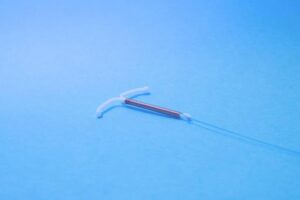When it comes to birth control, many options exist, but few have the longevity and efficacy of intrauterine devices, or IUDs. Among these, the copper IUD, known as Paragard, has garnered considerable attention due to its hormone-free approach to preventing pregnancy. This article explores the science behind Paragard, shedding light on how it works, its effectiveness, and what women can expect from its long-term use. Below, we’ll delve into the intricacies of this birth control method, offering a deeper understanding of its function and benefits.
Understanding the Basics of Paragard: What is a Copper IUD?

Paragard is a non-hormonal intrauterine device (IUD) designed to prevent pregnancy for up to 10 years. This small, T-shaped plastic device is wrapped in copper wire, which acts as a natural spermicide. Unlike hormonal IUDs that release progestin, Paragard relies on copper’s properties to prevent fertilization.
Its long-lasting and low-maintenance nature makes it a convenient option for women who prefer to avoid hormone-related side effects. Insertion is a quick procedure done by a healthcare provider, and the IUD becomes effective almost immediately. Women are advised to consult with a provider beforehand to determine if Paragard suits their individual health needs and lifestyle.
The Role of Copper in Paragard: How It Prevents Pregnancy
Copper is essential to Paragard’s effectiveness as a hormone-free birth control method. Once inserted, the copper reacts with uterine and fallopian tube fluids, creating an inflammatory response that is toxic to sperm. This environment prevents sperm from surviving or reaching the fallopian tubes, where fertilization typically occurs.
Copper also interferes with sperm movement, making it nearly impossible for them to reach an egg. It may also influence the cycle of egg maturation and reduce the likelihood of implantation, even if fertilization occurs. These combined effects make Paragard a highly reliable option for pregnancy prevention, especially for women sensitive to hormones or seeking a non-hormonal alternative.
The Mechanism of Action: How Paragard Works Once Placed
Paragard is an intrauterine device that begins working immediately after placement in the uterus. It releases copper ions, which create a spermicidal environment that neutralizes sperm upon entry. The IUD also thickens cervical mucus, forming a barrier that slows sperm movement and hinders their ability to reach an egg.
Combined with a mild, localized inflammatory response in the uterus, Paragard maintains an environment that is hostile to both sperm and implantation. These mechanisms make it more than 99% effective in preventing pregnancy, according to clinical studies. While highly reliable as contraception, Paragard does not protect against sexually transmitted infections, so condom use may still be recommended.
Examining the Effectiveness and Safety of Paragard

Paragard is a highly effective, hormone-free IUD with a failure rate of less than 1% when used correctly. Its long-term reliability comes from not requiring daily user action, making it a convenient option for many women. It is generally safe, though some users may experience heavier periods or increased cramping, which often lessen over time.
Women considering Paragard should consult their healthcare provider to review any medical concerns or risks. Rare complications like device displacement or uterine perforation may occur, making follow-up visits important. Paragard is suitable for breastfeeding women and allows for a quick return to fertility after removal, appealing to those planning future pregnancies.
Long-Term Use and Maintenance: What to Expect from Paragard
Paragard offers long-term contraception, remaining effective for up to ten years after insertion. Its extended duration makes it a cost-effective and convenient option, eliminating the need for daily or monthly birth control routines. The device requires minimal maintenance, though users should attend regular check-ups and learn how to check the IUD strings to ensure proper placement.
Removal is simple and can be done at any time by a healthcare provider, with fertility typically returning quickly afterwards. Women considering Paragard should receive thorough counseling on the insertion process, potential side effects, and how to monitor for complications to ensure safe and confident use.
Overall, Paragard presents a unique, hormone-free alternative to other birth control methods, offering long-term protection with a single procedure. Its effectiveness and safety profile make it a preferred choice for many women who value convenience and control over their reproductive health.



